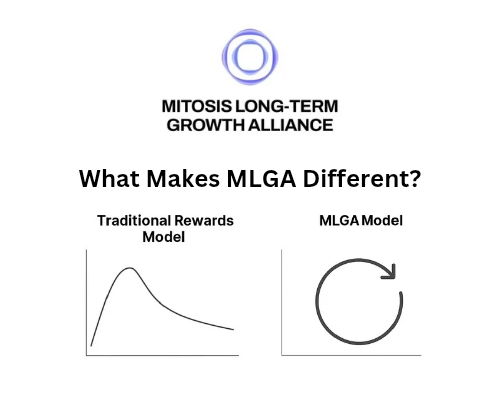Ink Chain: The Modular L2 for Liquidity and Settlement in a Rollup-Centric World
In the modular blockchain stack, execution is moving to sovereign rollups — L3s and app-specific chains — while settlement, interoperability, and liquidity demand new coordination layers. Ink is a modular Layer 2 (L2) designed specifically for this future: a settlement and liquidity layer that powers L3 ecosystems with secure finality and seamless interoperability.
Imagine deposit $ETH in Mitosis L1 from Ink chain, then deposit in Mitosis Matrix Vault or EOL
Follow Mitosis on X for more updates.
Let’s explore what makes Ink a critical infrastructure layer in the age of modular rollups.
🧱 What Is Ink?
Ink is a modular Layer 2 chain that provides:
- Settlement for L3s and modular rollups
- Liquidity abstraction across fragmented rollup environments
- Shared finality for sovereign execution layers
- Interoperability infrastructure for message and asset routing
Ink does not compete with execution layers. Instead, it coordinates them — acting as the shared layer that L3s plug into for trust-minimized settlement and deep cross-domain liquidity.
It’s built to support the emerging rollup-centric internet: dozens or hundreds of application-specific L3s that need a secure, efficient, and composable backbone.
🔍 Core Design Philosophy
Ink is built around three modular principles:
1. Execution is Fragmented, Settlement Must Be Unified
As execution moves to L3s, Ink provides a single environment where their results can be verified, assets can settle, and messages can be routed securely.
2. Liquidity Should Be Abstracted from Execution
By decoupling liquidity from execution environments, Ink allows protocols and users to access shared liquidity regardless of the rollup they operate on.
3. Modularity Means Optionality
Ink is designed to be opt-in — L3s can configure how they settle, what finality windows to adopt, and how to manage bridging and message routing.
🔧 How Ink Works
Ink introduces a three-layer structure:
✅ 1. L3s and Modular Rollups (Execution Layers)
These chains handle the actual transaction execution — games, DeFi apps, social platforms, etc. They produce state updates and proofs.
✅ 2. Ink (Settlement Layer)
Ink receives those proofs and commitments, validates or finalizes them, and acts as the canonical settlement layer. It also coordinates cross-rollup messages and asset flows.
✅ 3. Liquidity Layer
Built atop the settlement layer, this component provides unified liquidity access and cross-chain transfer mechanisms, enabling composable DeFi and efficient asset mobility.
🧬 Key Features
🛡️ Trust-Minimized Settlement for L3s
L3s connect to Ink to finalize their state and gain access to secure bridging and messaging. This eliminates the need to build custom infrastructure per rollup.
🔁 Native Interoperability
Ink handles message passing and state commitments between L3s. Its native routing system ensures fast, trustless communication — no centralized relayers required.
💧 Liquidity Abstraction
Assets exist in a unified liquidity layer managed by Ink, making cross-rollup swaps, bridges, and lending markets easier to build and more capital-efficient.
🧱 Modular Architecture
Ink doesn’t impose a single security model. L3s can customize:
- Finality windows
- Proof types (fraud proofs, validity proofs)
- Settlement frequency
This makes it ideal for Rollup-as-a-Service platforms and app chains with diverse needs.
🔗 Use Cases
Ink unlocks a new class of applications and services:
| Use Case | Description |
|---|---|
| 🏗️ Rollup-as-a-Service | Offer L3s with instant access to secure settlement and liquidity via Ink |
| 💹 Cross-Rollup DeFi | Deploy protocols that aggregate liquidity across L3s |
| 🌉 Bridgeless Transfers | Move assets and messages trustlessly without legacy bridges |
| ⚙️ Modular Governance | Coordinate governance across chains via Ink’s message router |
🛰️ Positioned in the Modular Stack
Ink fits between execution and data availability layers:
L3 Rollups
⬇
Ink (Settlement & Liquidity Layer)
⬇
Base L1 (e.g., Ethereum or modular DA layer)
This positioning enables it to aggregate the activity of many L3s into a single liquidity layer with finality guarantees, while outsourcing data availability to other providers (e.g., Celestia or EigenDA).
🔮 Vision: Infrastructure for a Modular Future
The modular future is coming fast — one where each app has its own chain, and users seamlessly interact with dozens of domains. But without unified coordination, this future could fragment liquidity, trust, and composability.
Ink solves this by offering:
- Unified liquidity routing
- Secure settlement for diverse rollups
- Composable infrastructure for multi-chain dApps
Ink is not a general-purpose L2. It’s a specialized modular L2, focused on powering the rollup economy with trust, capital efficiency, and simplicity.
📚 Learn More
Ink Chain is the modular L2 for modular chains — a settlement hub, liquidity engine, and interoperability router all in one. In the rollup-centric world ahead, Ink is the infrastructure that lets sovereign chains act like one.

Comments ()